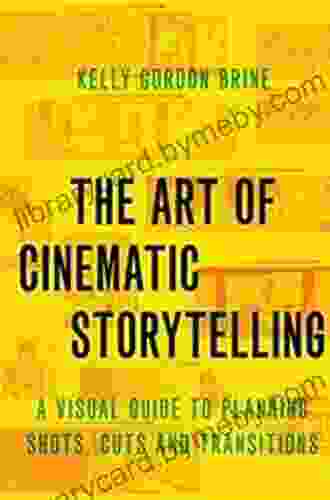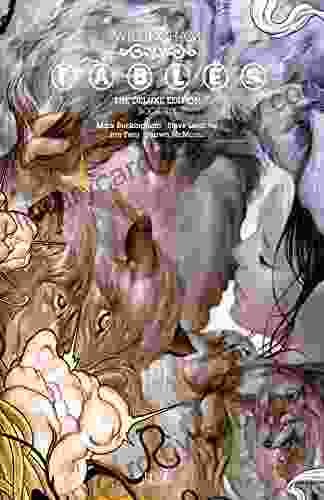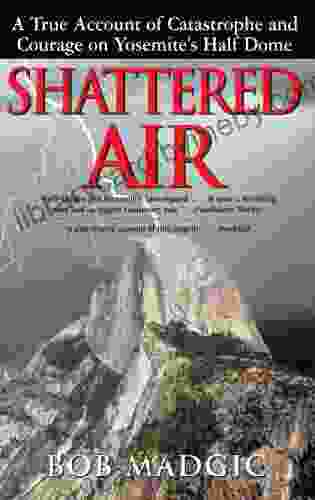Prologue: The Genesis of a Cinematic Tale
Cinematic storytelling, a mesmerizing blend of art and science, has captivated audiences for over a century. From the silent era's flickering images to the modern marvels of digital cinema, the moving image has become an integral part of our cultural landscape. Behind every captivating film lies a tapestry of intricate techniques and storytelling principles, meticulously woven together to evoke emotions, ignite imaginations, and leave an enduring impact.
Chapter 1: The Cinematic Toolbox: Essential Tools for Shaping Narratives
Every filmmaker, like a skilled artisan, draws upon a diverse collection of tools to craft their cinematic masterpieces. These tools, ranging from the fundamental principles of narrative structure to the cutting-edge techniques of visual storytelling, provide the building blocks for compelling cinematic experiences.
4.1 out of 5
| Language | : | English |
| File size | : | 110324 KB |
| Text-to-Speech | : | Enabled |
| Screen Reader | : | Supported |
| Enhanced typesetting | : | Enabled |
| Word Wise | : | Enabled |
| Print length | : | 355 pages |
| Lending | : | Enabled |
Narrative Structure: The Blueprint of Every Story
A well-crafted narrative structure serves as the backbone of any cinematic tale. From the classic three-act structure to more complex, non-linear narratives, filmmakers employ various techniques to organize and present their stories in a manner that captivates the audience's attention.
Character Development: Breathing Life into the Silver Screen
Compelling characters are the lifeblood of cinematic storytelling, drawing viewers into their journeys and resonating deeply with their emotions. Through dialogue, action, and visual cues, filmmakers craft characters that are both relatable and unforgettable.
Visual Storytelling: Painting with Moving Images
Cinema is a visual medium, allowing filmmakers to communicate powerful messages and evoke vivid emotions through the strategic use of cinematography, lighting, and composition. From sweeping landscapes to intimate close-ups, every visual element contributes to the overall narrative and the viewer's emotional experience.
Chapter 2: Through the Lens: Cinematography and Lighting
The art of cinematography encompasses not only the technical aspects of capturing images but also the creative decisions that shape the film's visual aesthetic. From camera angles and movements to lighting techniques and color grading, cinematographers wield their artistry to transport viewers into the cinematic world.
Camera Techniques: Capturing the Essence of the Story
Camera techniques, employed with precision, can profoundly impact the audience's perception of the story. From wide shots that establish the setting to close-ups that reveal intimate emotions, filmmakers use camera movements, focus, and framing to guide the viewer's gaze and evoke specific responses.
Lighting: Illuminating the Cinematic Canvas
Lighting, a powerful storytelling tool, serves multiple purposes in cinematic storytelling. It establishes mood and atmosphere, enhances characterization, and draws attention to specific narrative elements. From natural lighting that mimics the passage of time to stylized lighting that creates dramatic effects, filmmakers harness the power of light to craft visually stunning and emotionally resonant cinematic experiences.
Chapter 3: Editing: The Rhythm of the Narrative
Film editing, the art of assembling and refining the raw footage, is crucial in shaping the narrative flow, pacing, and emotional impact of a cinematic work. Editors stitch together individual shots, creating a cohesive sequence that guides the viewer's journey through the story.
Transitions: Seamlessly Guiding the Audience's Gaze
Transitions, employed strategically, connect scenes and sequences, ensuring a smooth flow of narrative and visuals. From simple cuts to more elaborate dissolves and wipes, editors use transitions to maintain the viewer's engagement and guide their emotional response.
Pacing: Orchestrating the Tempo of the Story
Pacing, meticulously controlled through editing, determines the rhythm and tempo of the narrative. Fast-paced editing creates a sense of urgency and excitement, while slower pacing allows for more reflective and contemplative moments. Editors skillfully balance these elements to maintain viewer interest and drive the story forward.
Chapter 4: Directing: Guiding the Cinematic Vision
Directors, the visionaries behind every cinematic work, lead the creative team, translating the screenplay into a visually captivating experience. From guiding actors' performances to overseeing the overall production, directors play a pivotal role in shaping the film's artistic direction.
Working with Actors: Bringing Characters to Life
Directors collaborate closely with actors, guiding their performances to extract the most authentic and nuanced interpretations of their characters. Through discussions, rehearsals, and on-set direction, directors empower actors to embody the emotional and psychological depths of their roles.
Visualizing the Cinematic World: Translating Imagination into Reality
Directors are responsible for translating the written screenplay into a visual spectacle that captivates viewers. They collaborate with cinematographers, production designers, and other creatives to develop a unique visual language that complements the story and enhances the audience's immersive experience.
Chapter 5: Screenwriting: The Foundation of the Cinematic Journey
Screenwriting forms the foundation upon which the entire cinematic edifice is built. Screenwriters weave intricate narratives, craft compelling characters, and lay the groundwork for the visual storytelling that unfolds on screen.
Plot Development: Crafting a Captivating Narrative
At the heart of every screenplay lies a well-structured plot, a sequence of interconnected events that drive the story forward and keep the audience engaged. Screenwriters employ various plot devices and narrative techniques to create suspense, build tension, and deliver a satisfying resolution.
Character Creation: The Essence of Cinematic Storytelling
Characters, the driving force of any narrative, are meticulously crafted by screenwriters through dialogue, action, and backstory. They create characters that are relatable, flawed, and capable of eliciting a range of emotions from viewers.
Dialogue: The Power of Words on Screen
Dialogue, an integral element of screenwriting, serves multiple purposes in cinematic storytelling. It reveals character motivations, advances the plot, and provides emotional depth to the narrative. Screenwriters carefully craft dialogue that is both natural and impactful, enhancing the audience's connection to the characters and their journeys.
Epilogue: The Legacy of Cinematic Storytelling
Cinematic storytelling, an art form that transcends time and cultures, continues to captivate and inspire audiences worldwide. Through its ability to evoke emotions, ignite imaginations, and provoke thought, cinema has become an integral part of our collective human experience.
As technology advances and storytelling techniques evolve, the future of cinematic storytelling remains bright. Filmmakers, armed with a vast array of tools and an unwavering passion for the craft, will continue to push the boundaries of the medium, captivating audiences with unforgettable cinematic experiences.


























































































